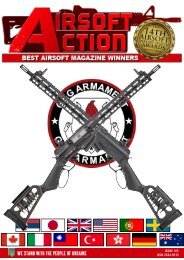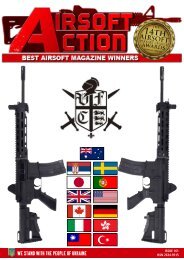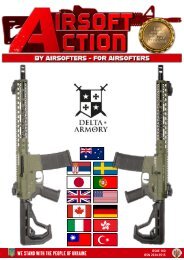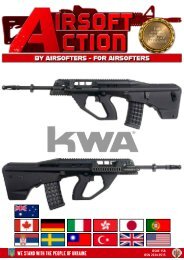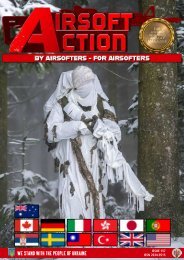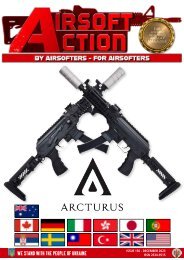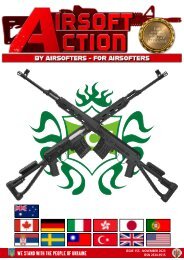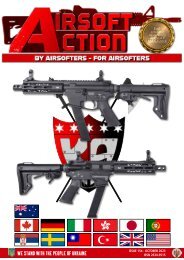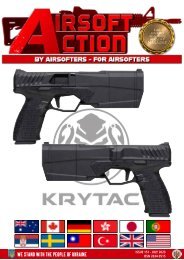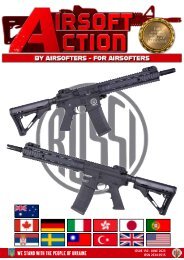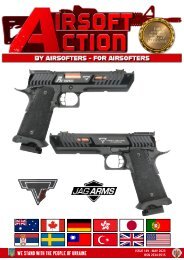PMCI - October 2014
Slightly later than planned due to operational commitments, the second issue of PMCI is now available. Steve Barret writes about his 1st-hand experience of the Taliban's attack on his compound in Kabul, while Columbia-based security expert, Ban Hockman, points out some of the dangers faced while travelling in unknown locations. There's loads of reviews on everything from footwear to computers and we get to Meet the Manufacturer, Snugpack. As always, PMCI is FREE to the reader. We hope you enjoy this issue - wherever you are in the World!
Slightly later than planned due to operational commitments, the second issue of PMCI is now available.
Steve Barret writes about his 1st-hand experience of the Taliban's attack on his compound in Kabul, while Columbia-based security expert, Ban Hockman, points out some of the dangers faced while travelling in unknown locations.
There's loads of reviews on everything from footwear to computers and we get to Meet the Manufacturer, Snugpack.
As always, PMCI is FREE to the reader.
We hope you enjoy this issue - wherever you are in the World!
Create successful ePaper yourself
Turn your PDF publications into a flip-book with our unique Google optimized e-Paper software.
Iamongst American colleagues<br />
for their love<br />
of body warmers and<br />
insulated vests. He and<br />
his wife believed that this would be<br />
something that would also catch on<br />
in the UK and taking a leap of faith,<br />
they decided to start making similar<br />
garments themselves. Bryony Harris,<br />
Director and Co-founder of Snugpak,<br />
taught husband Brett Harris, Company<br />
Chairman to sew. Together they<br />
produced some experimental body<br />
warmers and jackets.<br />
The couple both had full-time<br />
jobs so every spare minute of their<br />
downtime was spent making as many<br />
garments as possible. With the help<br />
of outworkers a cottage industry was<br />
born. In those early days production<br />
stood at just 15 jackets per week, but in<br />
1977 the couple decided to invest what<br />
money they had into G & H Products<br />
f you want a British… No, make that a Global success<br />
story, then you really have to look no further than Snugpak.<br />
Relied upon by civilians and military personnel<br />
around the world for their technically advanced sleeping<br />
systems and clothing the Yorkshire based manufacturer<br />
continues to innovate in their specialist fields.<br />
Where did this story begin you may ask? In the<br />
late 1970s a deep-sea diver working on the oil rigs<br />
took note of the trend<br />
Ltd (which later became Craghoppers) to gain more outdoor business<br />
experience. Two years later they made the decision to branch out on<br />
their own with Snugpak. Although still making insulated clothing they<br />
realised that if the new company was going to be successful they would<br />
need to manufacture products with year round appeal, rather than the<br />
seasonal body warmer. Sleeping bags were the logical choice.<br />
By 1984 the company had grown and the number of<br />
machinists had increased to seven; by 1986 sales had grown<br />
so strong the company had to move to larger premises. The<br />
company moved down the road to a Grade II listed old woollen<br />
mill in Silsden where they remain to this day.<br />
Brett knew that the way forward for the company was<br />
through innovation. Man-made sleeping bags using synthetic<br />
fill rather than traditional<br />
down were large, heavy<br />
and bulky. Down though<br />
loses most of its insulative<br />
properties once wet - not an<br />
ideal product for the ends<br />
envisaged - so a synthetic<br />
alternative had to be found.<br />
Brett wanted to produce a<br />
cheaper, man-made equivalent<br />
to the expensive down<br />
filled sleeping bag and in<br />
1987 Snugpak launched<br />
their Softie 6 and Softie<br />
12 sleeping bags into the<br />
market. I recall seeing one<br />
of the original models and<br />
being amazed at the tiny<br />
pack size and light weight<br />
in comparison to their<br />
competition. The two bags<br />
were the smallest synthetic<br />
sleeping bags on the market<br />
and sales rocketed. Today<br />
the Softie range consists of many different models all based on<br />
this initial idea but they have been constantly upgraded as new<br />
insulation and fabric technologies have emerged.<br />
Now firmly established in the camping and outdoor market,<br />
word started to spread within the military about the superior<br />
Now firmly established in<br />
the camping and outdoor<br />
market, word started<br />
to spread within the<br />
military about the superior<br />
performance of Snugpak<br />
sleeping bags and insulated<br />
clothing and it was not long<br />
before olive green options<br />
of the products were widely<br />
available.




